Chromebooks are great computers, especially for students, grandparents, kids, and anyone who needs a reliable, easy-to-use portable machine. But if you need a more traditional operating system, is that a viable option?
A few years ago, Google helped add Linux support to ChromeOS. So anyone could install Linux apps on their Chromebook and take advantage of traditional GUI (Graphical User Interface) software, and even the command-line interface.
For any Chromebook user who wants to be able to run more standard apps, this is a great way to extend ChromeOS to new uses. And since it’s Linux, tons of software can be installed. For example, if you prefer a classic email client, you can install software like Thunderbird or Geary. Want another browser? Install Firefox. Do you need an image editor? Install GIMP. You can even install a full office suite like LibreOffice.
There are plenty of other things to do after adding Linux support to ChromeOS. For example, you can install Docker and develop containers.
I show you below how to add Linux support to your Chromebook and how to install your first app. All you need for this to work is an up-to-date Chromebook. The situation was different when this feature launched, but today you can be on any ChromeOS channel (official, dev, or unstable) to enable it.
How to Enable Linux Support on ChromeOS
1. Open Settings
Click on the system tray, then click on the gear icon in the top right.
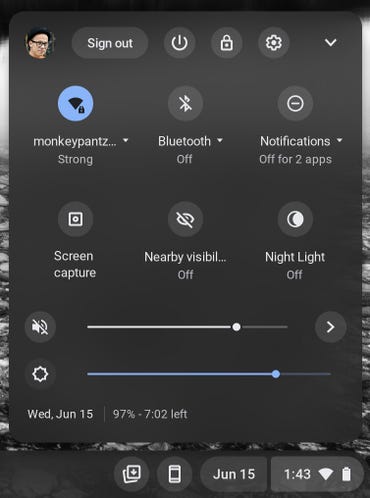
The ChromeOS settings window is easily accessible from the context menu in the system tray. Image: Jack Wallen/ZDNET.
2. Locate the Developers section
In the Settings app, scroll down until you see the section Developers.
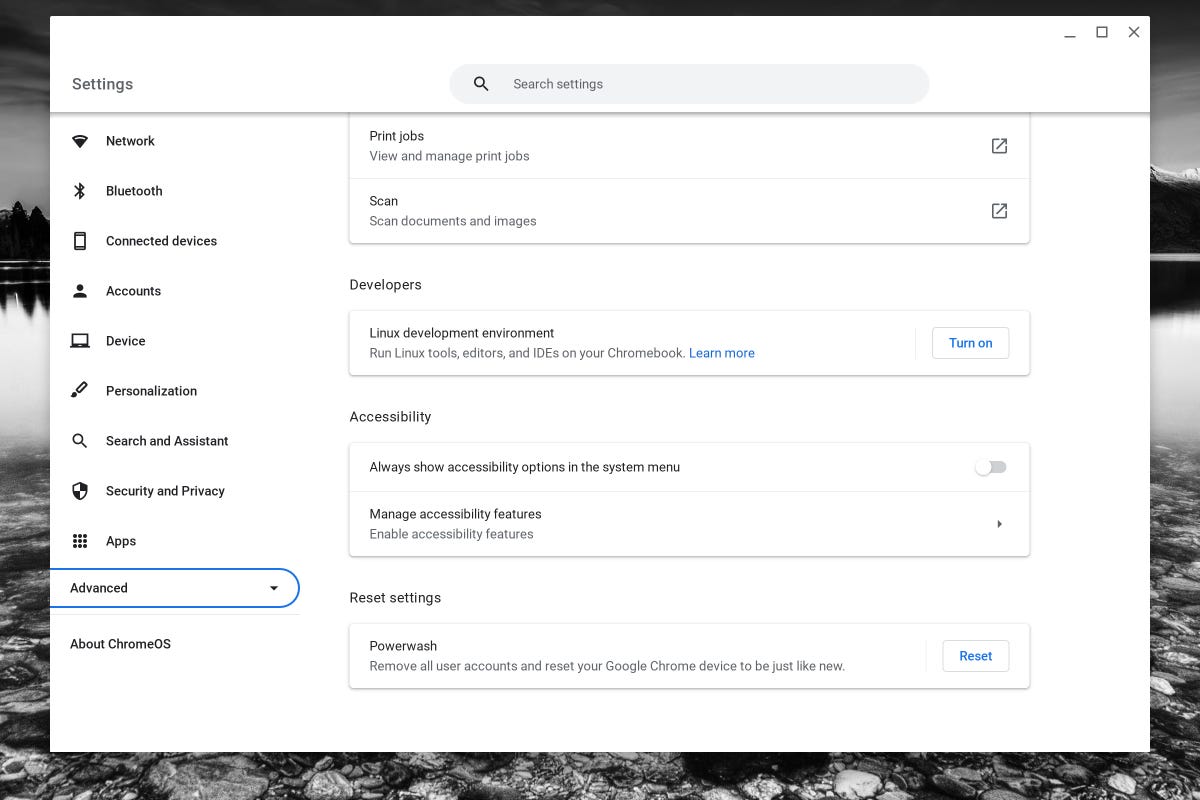
The Developers section in the ChromeOS Settings app. Image: Jack Wallen/ZDNET.
3. Activate the Linux development environment
Click on Activate the Linux development environment. In the window that appears, click Following.
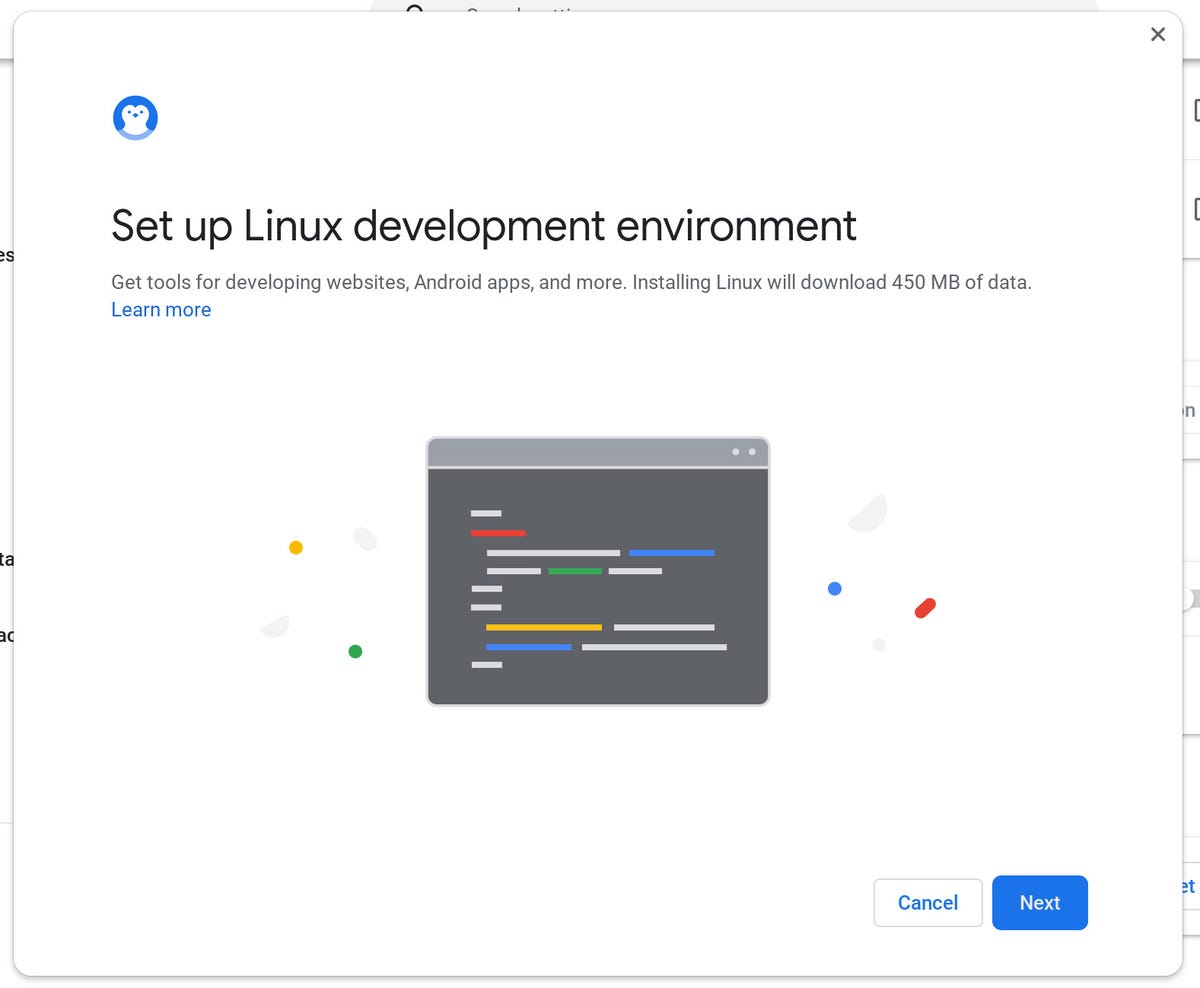
The Linux development environment installation wizard. Picture: Jack Wallen.
In the next window, make sure you agree with the username, then customize the disk size or accept the default of 10 GB and click Install.
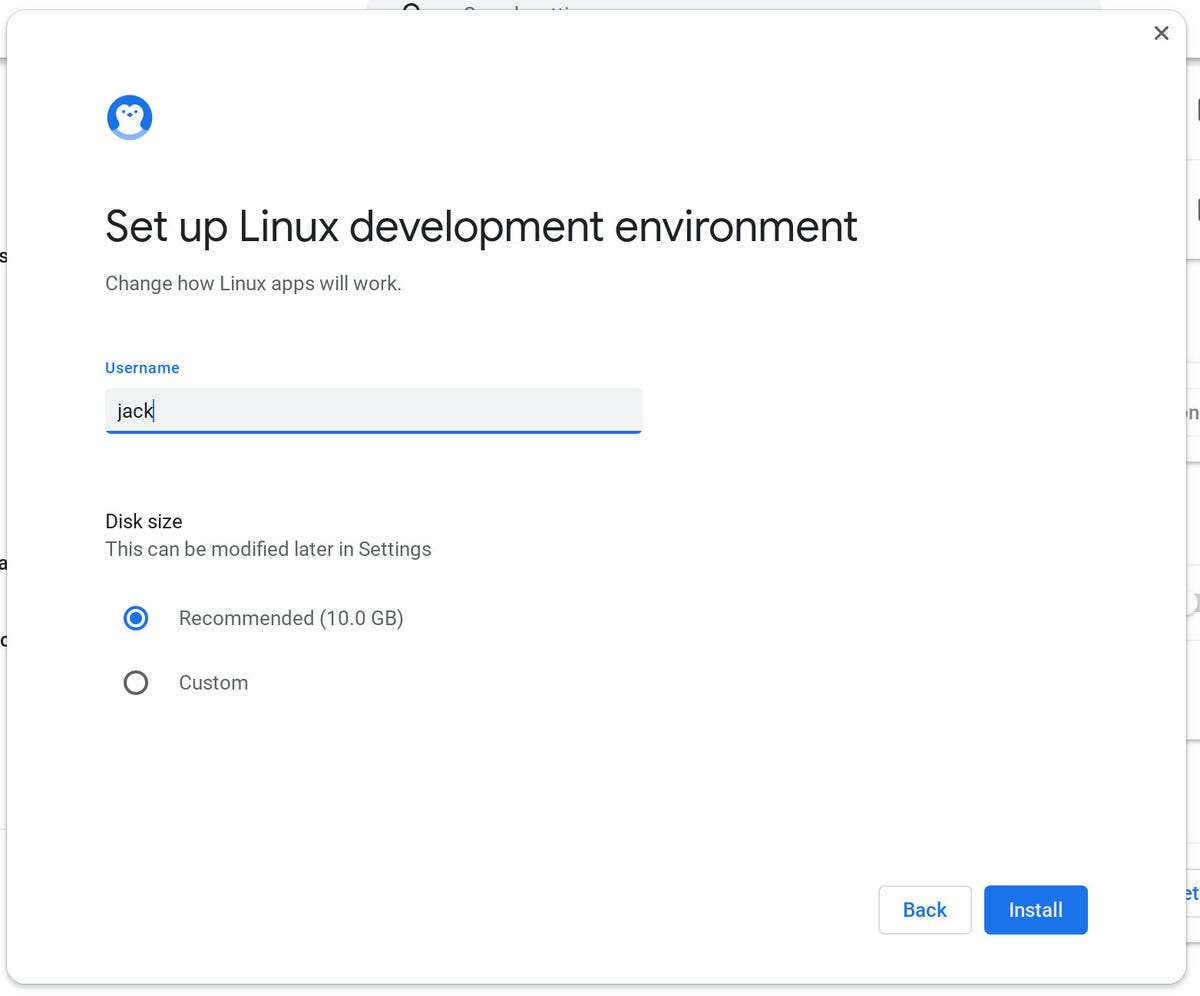
The username for your Linux environment is defined here. Picture: Jack Wallen.
Once you have clicked on Installthe process begins and may take 2-20 minutes, depending on your network connection speed and the power of your Chromebook.
Once the installation is complete, a terminal window opens, indicating a resounding success.
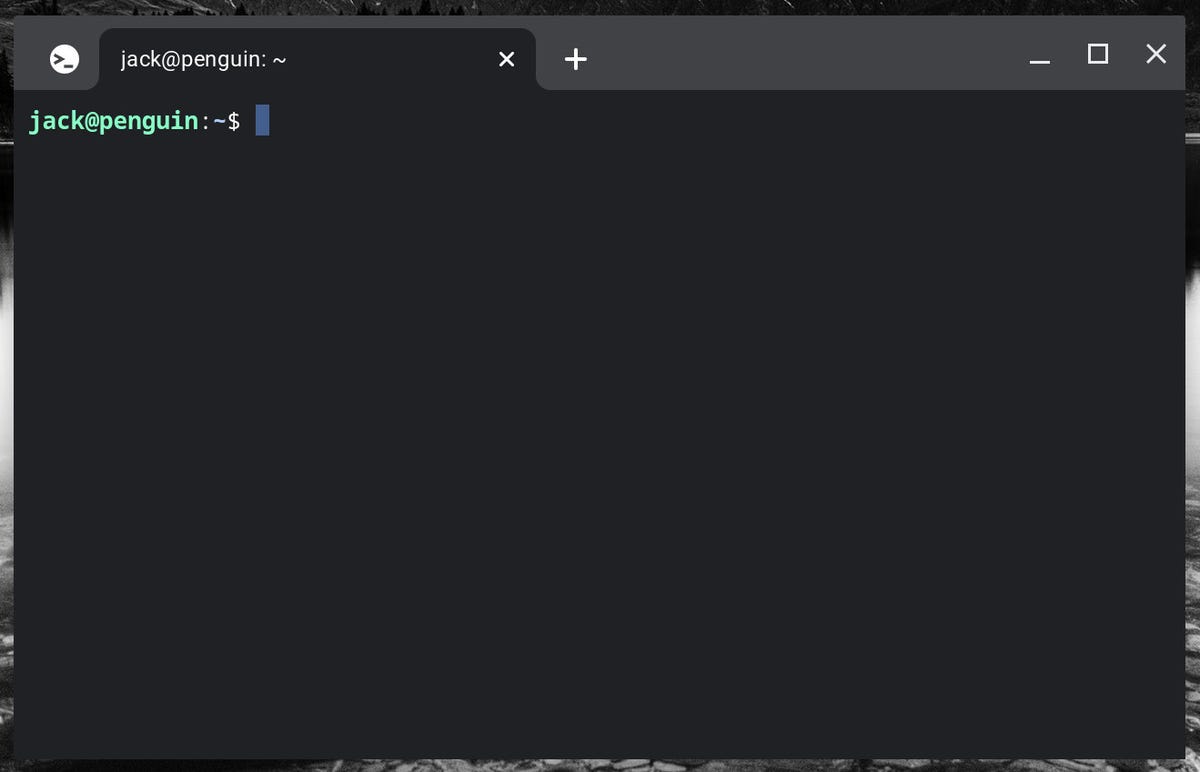
Cheer ! The Linux development environment has been added to ChromeOS. Image: Jack Wallen
How to Install Your First Linux App in a Chromebook
Let’s install the Geary email client. To do this, update apt with the command:
sudo apt-get updateOnce apt updated, install Geary with:
sudo apt-get install geary -yOnce the installation is complete, you can open Geary from the ChromeOS launcher.
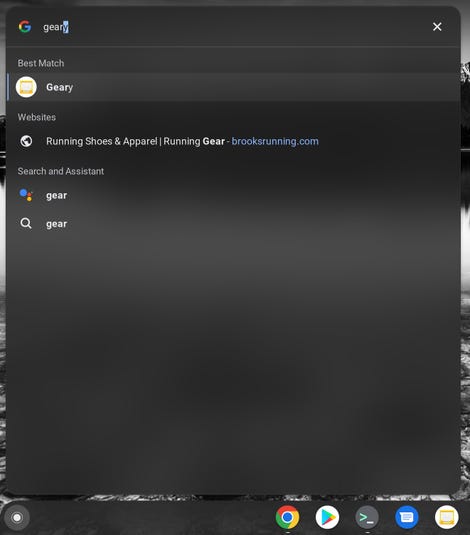
Geary was successfully installed on ChromeOS. Picture: Jack Wallen.
And that’s how easy it is to add Linux support to your Chromebook. Do that and install all the apps you need to expand ChromeOS options.
Source: ZDNet.com
